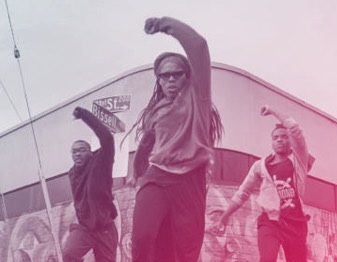In adapting that source material, Hood compresses it like coal into a diamond, crushing in on the story arc of cadet Ender Wiggin (Asa Butterfield), who’s part of an adolescent army being raised by an international military authority. The theory is that the dexterity and malleability of young minds and bodies can be used to create a fighting force with near-instinctual tactical brilliance and adaptability. And Ender is a prodigy, innately gifted in all aspects of command and combat, referred to by Graff in messianic terms as “the one”.
But even a promised child needs some molding, and Graff’s agenda for Ender includes cruel psychological manipulations that isolate the boy during training and foster resentment among his fellow cadets, and even crueler manipulations when battle is at hand. The morality of that handling is what Graff is putting off defending in conversation with Major Anderson (Viola Davis), the officer in charge of monitoring Ender’s state of mind.
Their ongoing push and pull is one threaded throughout the film with rather annoying gender-tagged simplicity. Graff is always concerned with making Ender tougher; Anderson is mostly concerned with his feelings. Similarly, Ender’s father supports Ender’s use of violence as a tactical strategy to deal with bullies. Mom isn’t convinced.
Ender finds kindness from Petra (Hailee Steinfeld), a female cadet, and cruelty from his squad leader, Bonzo (Moises Arias). Meanwhile, Ender tries to balance the dual natures he sees within himself, one of sociopathic violence that he associates with his older brother, the other of empathy, which he ties to his sister.
Look, we get it already: Men are thugs, women are nurturers.
The lack of dimension extends beyond the core characters to most of the supporting cast of largely interchangeable cadets. When they’re given any kind of characterization, it’s usually to fulfill a one-note archetype: the plucky misfit, the bully with deep-seated insecurities.
It would be nice if Hood had put as much effort into these characters as into the look of the film, which is slick, crisp and clean to the point of being antiseptic. The cadets do much of their training in virtual-reality simulators, and their real world sometimes seems just as meticulously planned and constructed.
That attention to detail does pay off in the training and battle set-pieces, and those sequences keep the film moving, even when they’re weighed down by the grim pall that Hood keeps as the movie’s consistent tone. It may seem odd for a teen-focused action movie to feel so glum, but that’s actually something that the director gets right, even if it threatens to make this a dull affair: Ender’s Game is a dark story of a children’s crusade built on the crushed psyches of damaged youths, and too much uplift would undermine it.
As it is, when the film’s young hero does get around to debating the morality of what he’s done, the movie is nearly over, and the ensuing sequel-setup conclusion feels far too rushed to give the fundamental question of the movie its due. But at least Ender’s Game has the courage to ask it.

9(MDAzOTIwODA0MDEyNTA4MTM1OTcyMGJmMA001))

